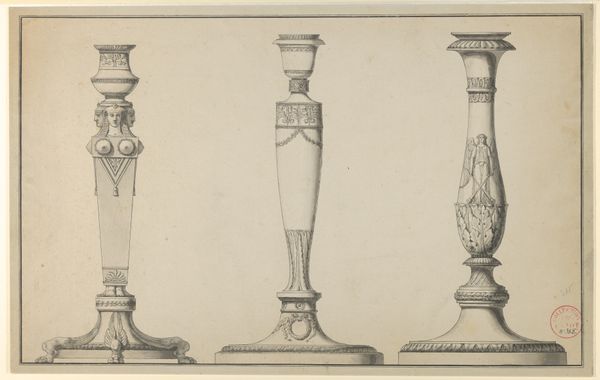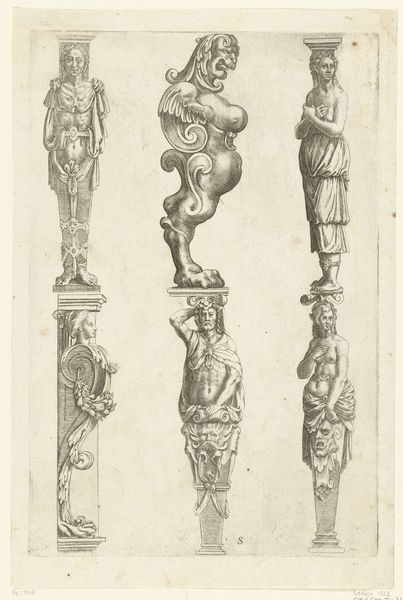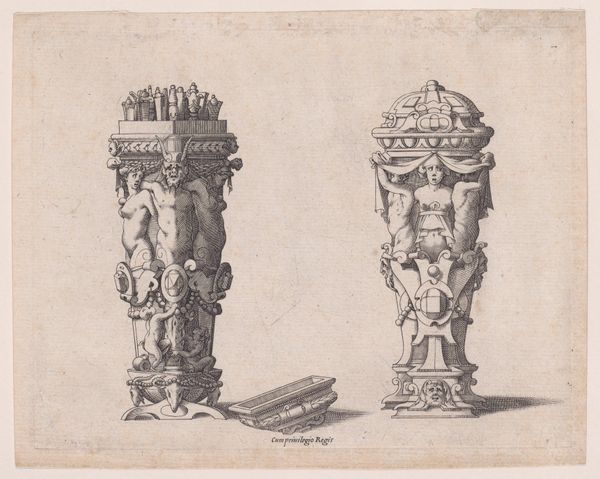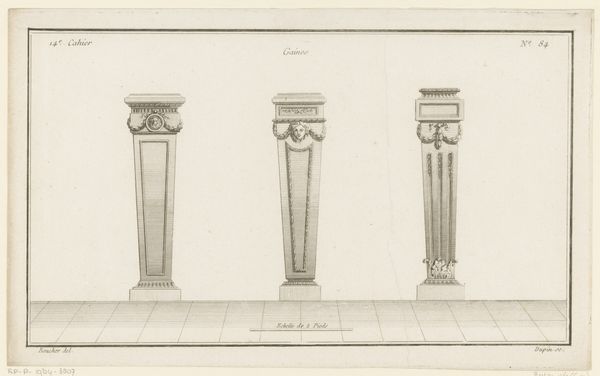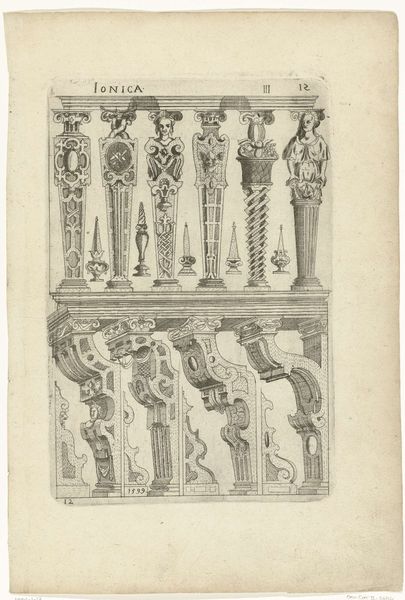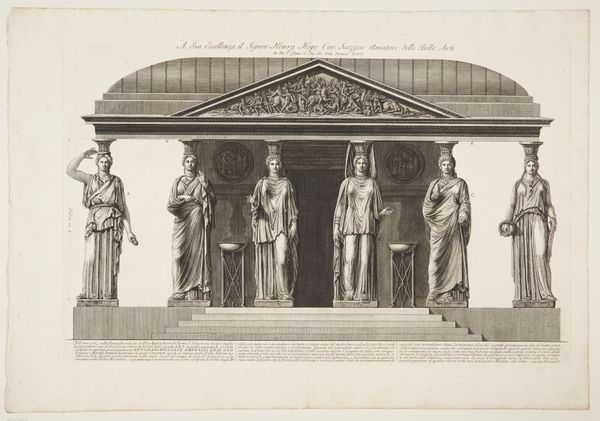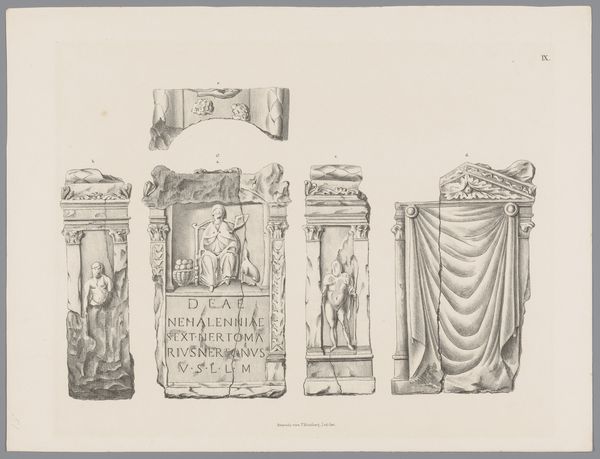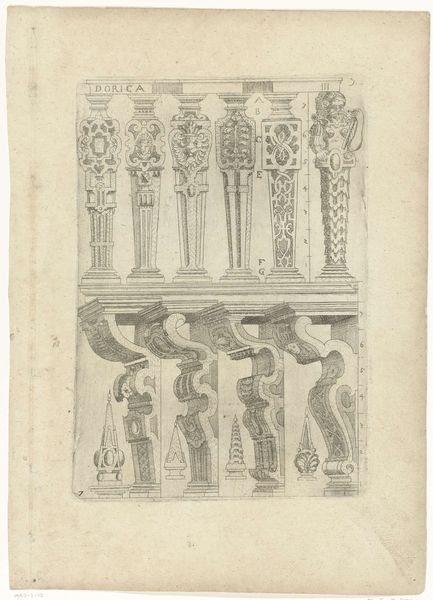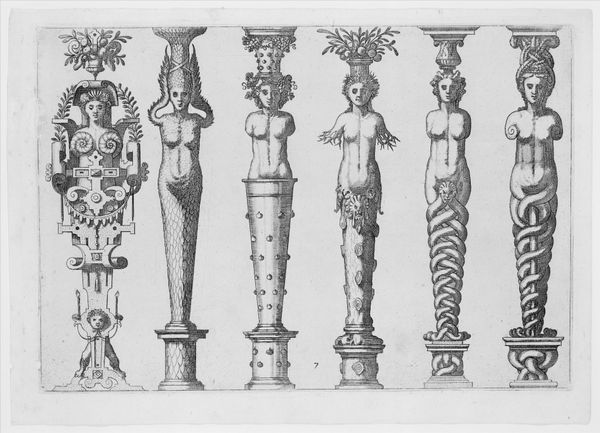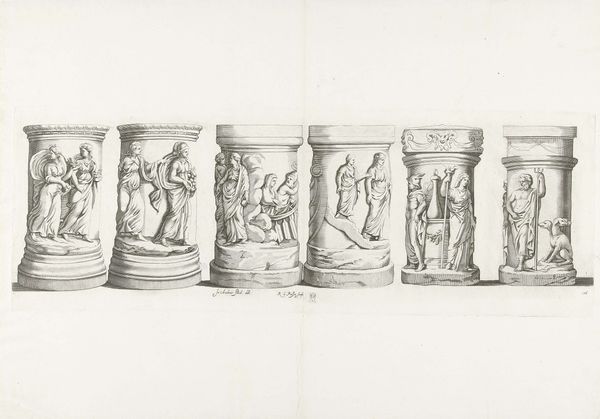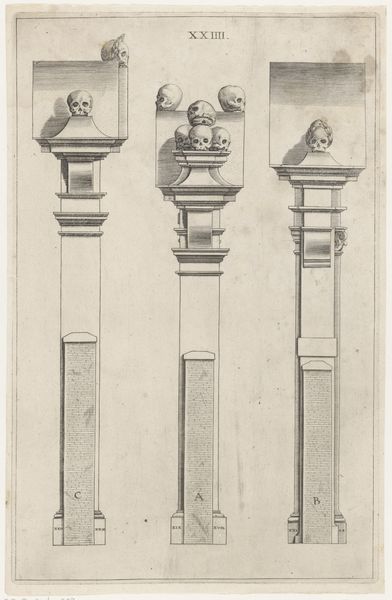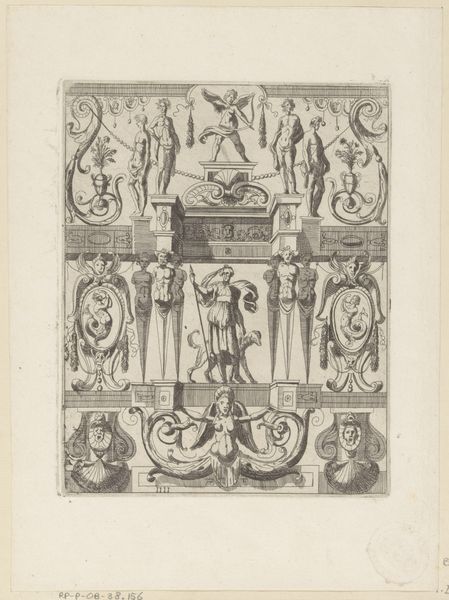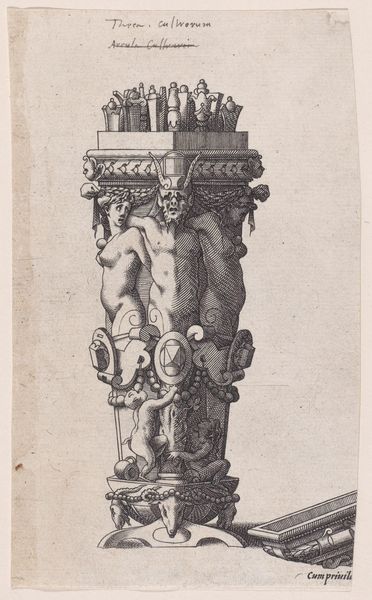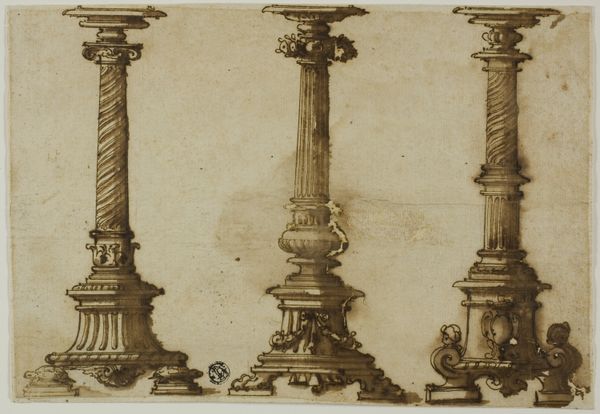![Six terms, four female and two male, with Hercules at far right, plate 1, from Caryatidum [...] sive Athlantidum multiformium ad quemlibet Architecture ordinem Accommodatarum centuria prima [...] by Hans Vredeman de Vries](/_next/image?url=https%3A%2F%2Fd2w8kbdekdi1gv.cloudfront.net%2FeyJidWNrZXQiOiAiYXJ0ZXJhLWltYWdlcy1idWNrZXQiLCAia2V5IjogImFydHdvcmtzLzJmOTM5MmEyLWMxYTQtNDY0Ni1hYjgyLWU4MjdkODg2ZGFiNi8yZjkzOTJhMi1jMWE0LTQ2NDYtYWI4Mi1lODI3ZDg4NmRhYjZfZnVsbC5qcGciLCAiZWRpdHMiOiB7InJlc2l6ZSI6IHsid2lkdGgiOiAxOTIwLCAiaGVpZ2h0IjogMTkyMCwgImZpdCI6ICJpbnNpZGUifX19&w=3840&q=75)
Six terms, four female and two male, with Hercules at far right, plate 1, from Caryatidum [...] sive Athlantidum multiformium ad quemlibet Architecture ordinem Accommodatarum centuria prima [...] 1527 - 1591
0:00
0:00
drawing, print, engraving
#
drawing
#
allegory
# print
#
mannerism
#
figuration
#
11_renaissance
#
history-painting
#
academic-art
#
engraving
Dimensions: Plate: 6 5/16 x 9 3/16 in. (16 x 23.4 cm) Sheet: 7 1/8 x 9 3/4 in. (18.1 x 24.8 cm)
Copyright: Public Domain
Curator: Here we have "Six terms, four female and two male, with Hercules at far right" by Hans Vredeman de Vries, created sometime between 1527 and 1591. It's an engraving, so a print made from a drawing, currently housed at the Metropolitan Museum of Art. Editor: It’s amazing to see these figures transforming into architectural elements. What strikes me is how the engraving medium lends itself so well to delineating the textures and the surface of these caryatids. How do you interpret this work? Curator: I see a deep engagement with materiality and labor here. Consider the process: de Vries, likely an architect and certainly a designer, creates a drawing, which is then meticulously translated into an engraving. Think about the artisan involved. How might their skill be undervalued when the final product is consumed primarily as an aesthetic object? The very act of creating this print makes a statement about the perceived value of craft versus high art. Editor: So, you are saying that the physical process of creating the work using the materials influences the concept behind it. But do you think the print’s function as a reproducible image changes that? Wouldn’t multiples suggest something more democratized, in terms of access and value? Curator: Precisely, the reproducible nature of prints is interesting. It democratizes access, yes, but also further separates the idea from the physical act of creation. We can have endless copies, but each original matrix—the plate—carries the weight of the labor and the intentionality of its maker. This raises a crucial question: does mass reproduction dilute the inherent value tied to its artisanal making? The engraving enables wider access, undeniably changing how we consider its place within society. Editor: That is interesting to consider. I had been focusing on the figures themselves but seeing it from a production and consumption angle changes the context significantly. Curator: Indeed, by understanding the materials and processes involved, we can reveal the complex social relations embedded within the artwork.
Comments
No comments
Be the first to comment and join the conversation on the ultimate creative platform.
